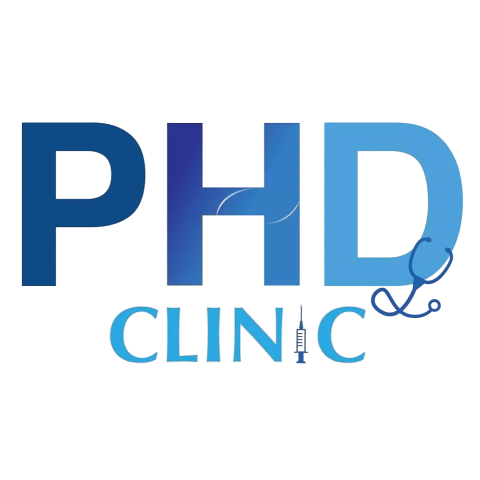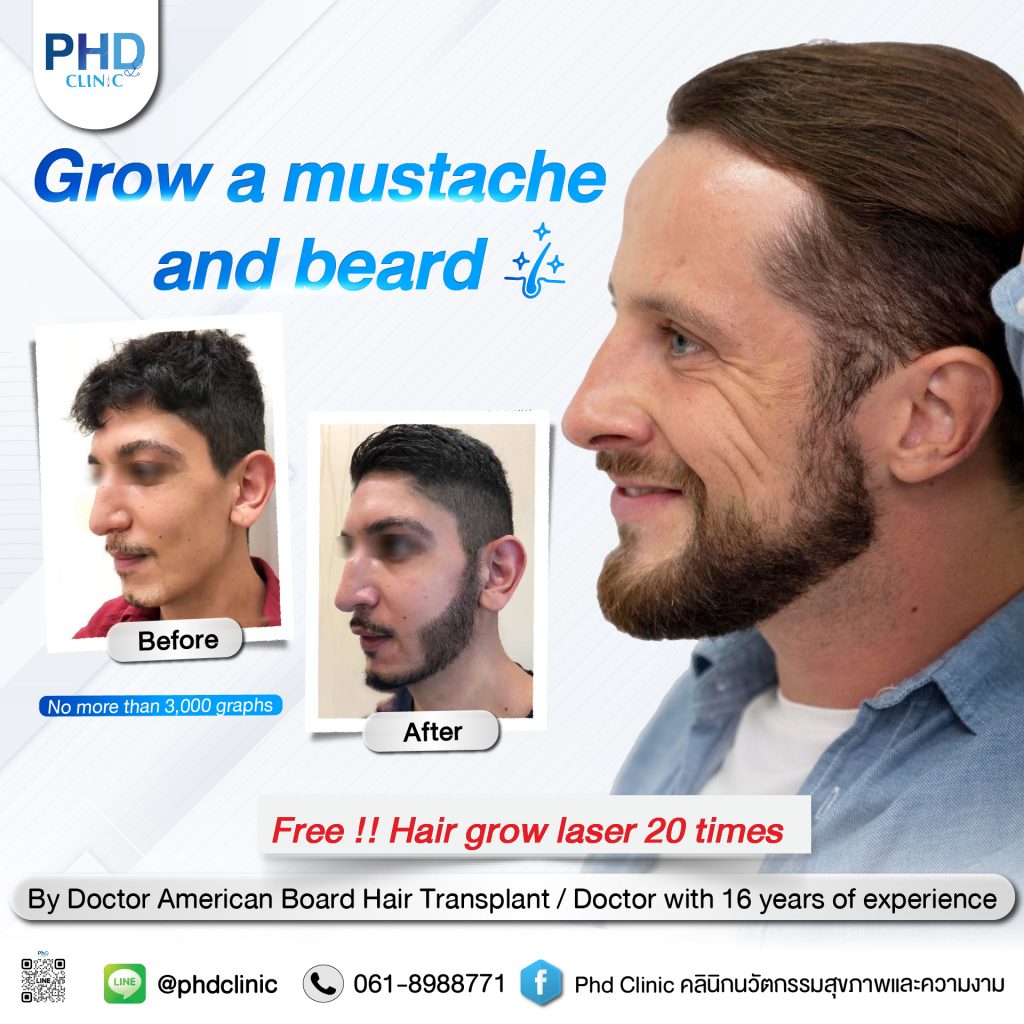
Grow mustache and beard phuket
Principles and Techniques of Mustache Transplant
Mustache transplantation involves the permanent transfer of hair grafts, where each graft contains 1-4 hair strands, to the desired area. Popular techniques include:
• FUE (Follicular Unit Extraction):
• Method: The doctor uses a special tool to punch/extract hair follicles one graft at a time from the back of the head (Donor Area).
• Implantation: Small channels or incisions are made in the recipient area (mustache area), and the hair grafts are implanted following the pre-determined direction.
• Pros: Small wounds, no need for stitches, no linear scar at the back of the head.
• FUT (Follicular Unit Transplantation):
• Method: The doctor removes a long strip of scalp from the back of the head (Strip) and then dissects it into individual hair grafts under a microscope.
• Implantation: Similar to the FUE technique, the grafts are implanted into the mustache area.
• Pros: Can transplant a large number of grafts in a single session.
• Caveat: Leaves a linear scar at the back of the head.
• DHI (Direct Hair Implantation):
• Method: A modification of the FUE technique, using a tool called the DHI Implanter (Pen) to extract hair grafts from the donor area and immediately implant them into the recipient area without the need to pre-create channels.
• Pros: Allows for precise control over the direction and depth of the implantation, helping to enhance graft survival.
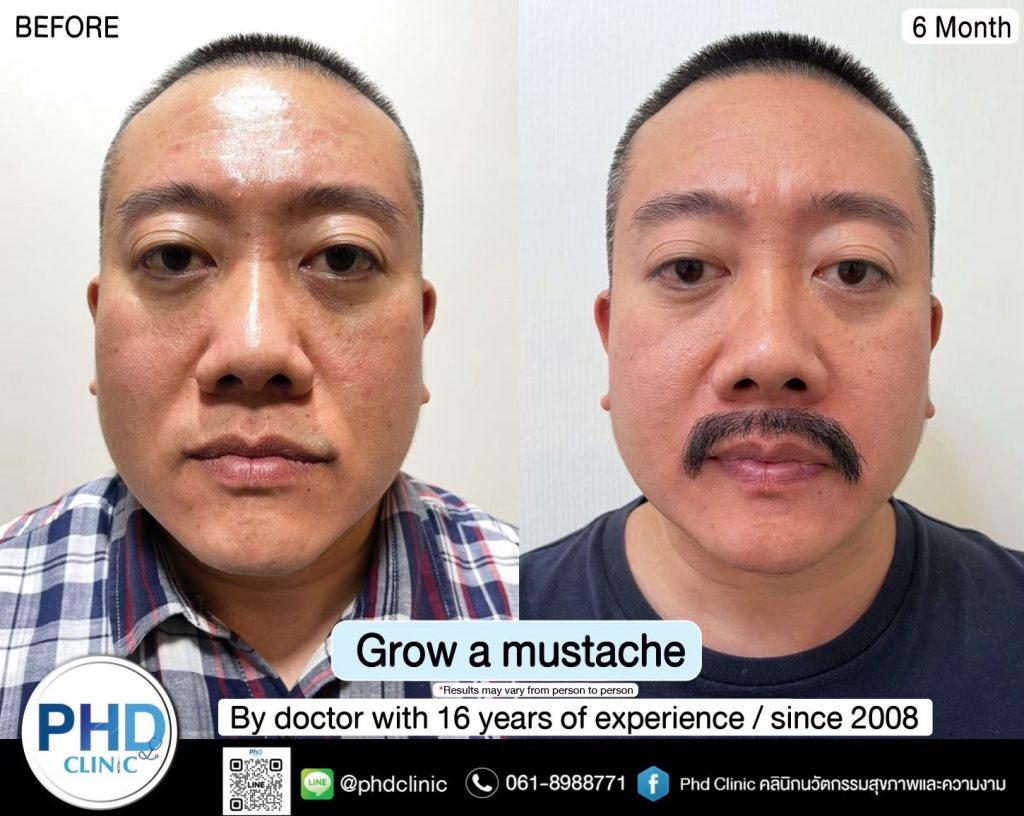
General Steps for Mustache Transplantation
1. Design: The doctor and the patient consult to design the desired mustache shape that suits the patient’s face.
2. Preparation: Shaving the hair in the back of the head (donor area) for techniques that require shaving (Short Hair FUE), and a slight trim/shave of the mustache/beard area may be done (it is recommended to stop shaving the mustache/beard 1 week before the surgery).
3. Local Anesthesia: Local anesthetic is injected into both the back of the head (graft harvesting site) and the facial area (implantation site).
4. Graft Harvesting: The doctor extracts hair follicles from the back of the head according to the chosen technique (FUE, FUT, or DHI).
5. Graft Implantation: The doctor implants the hair grafts into the mustache area following the designed pattern. This step requires meticulous attention to detail in setting the hair direction for the most natural-looking results.
6. Post-Procedure Care: The doctor provides instructions for wound care after the transplant.
Advantages of Permanent Mustache Transplant
• Permanent Results: The transplanted mustache is permanent because the transferred hair follicles are strong and durable.
• Custom Design: The shape, density, and direction of the mustache growth can be customized.
• Minimal Pain: Local anesthesia is used, resulting in little discomfort during the procedure.
• Quick Recovery: The recovery time is relatively short, allowing patients to return to daily activities quite quickly.

Self-Care After Mustache Transplant
• First 3 Days: Consume soft foods to minimize movement in the implanted area.
• Sleeping: Avoid sleeping on your stomach or side to prevent friction on the wounds.
• Touching the Area: Absolutely do not pick, scratch, or rub the transplanted area for the first 2 weeks to prevent the hair grafts from dislodging.
• Cleaning: Clean the transplanted area strictly following the doctor’s instructions.
Physical Preparation Before Surgery
• Stop Certain Supplements and Medications:
• Stop taking vitamins, fish oil, iron, and other supplements that affect blood clotting at least 7-14 days before the procedure.
• Avoid Alcohol and Smoking:
• Refrain from consuming alcohol and smoking for at least 7-14 days before and after the surgery, as this affects wound healing and graft survival.
• Avoid Caffeinated Beverages:
• Do not consume tea or coffee on the day of the surgery.
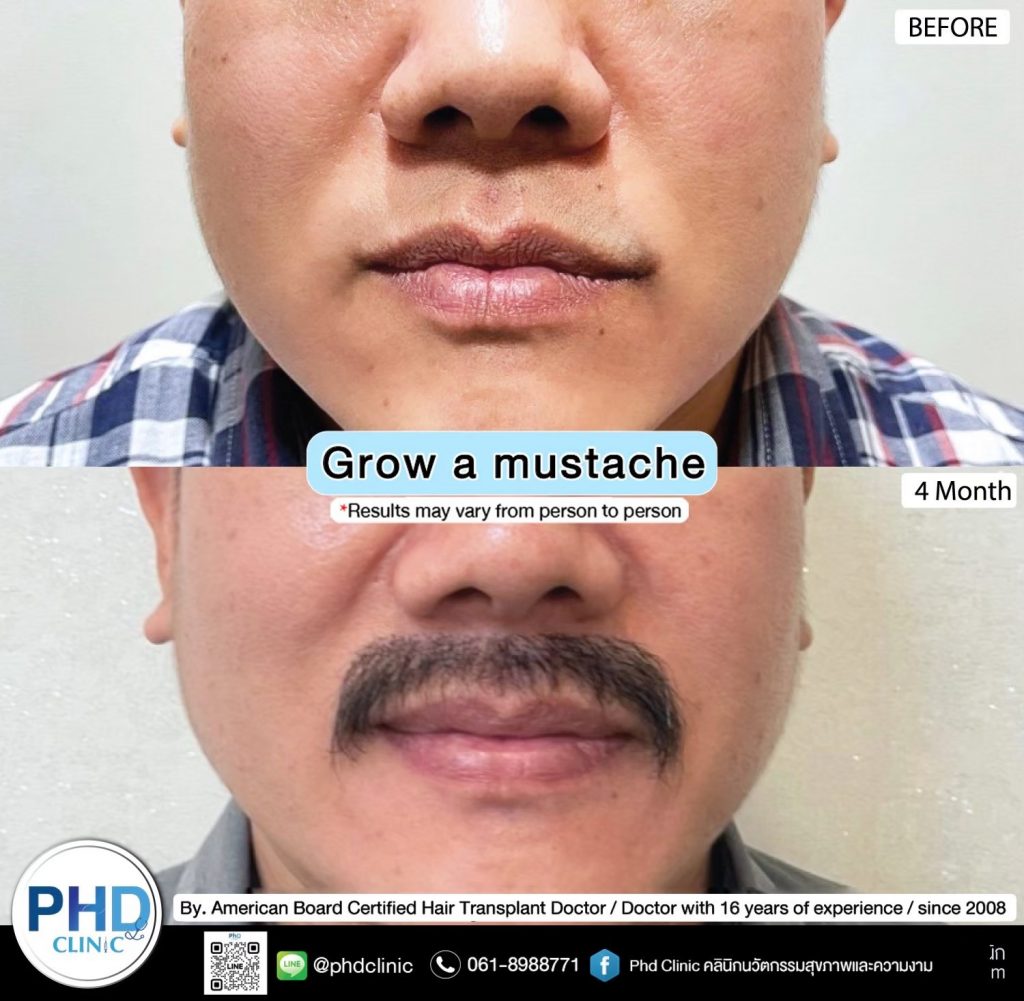
What to Know About the Growth Cycle
• Shedding (Shock Loss): It is normal for the transplanted hair to shed during the first 1-2 months. Do not be alarmed.
• New Growth: New hairs will begin to grow and thicken progressively over 3-8 months.
• Trimming: Once the mustache and beard grow longer, you can start trimming them as normal, but you should consult your doctor about the appropriate time to start shaving or using scissors for trimming.
REVIEW!!
ดูแลโดยแพทย์ผู้เชี่ยวชาญ
มีประสบการณ์และใบรับรองจากหลายสภาบัน
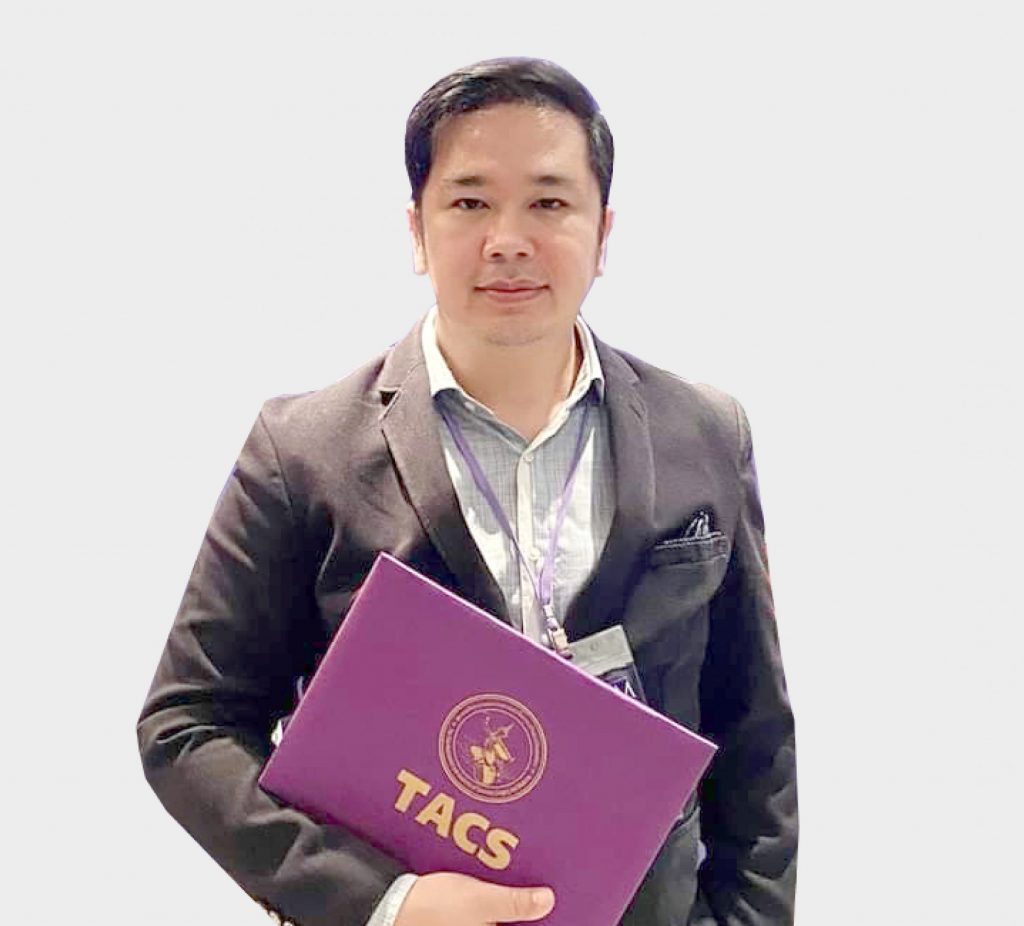
ดร.นพ.ธีรศักดิ์ แพทยาดิกุล
Dr.Teerasak Pattayadeekul
อาจารย์พิเศษ Dermatology and Regenerative medicine สำนักเวชศาสตรชะลอวัย ม.แม่ฟ้าหลวง / แพทย์ปริญญาเอก สาขา ผิวหนัง ศัลยกรรมผิวหนัง/เลเซอร์/ความงาม
- Fellow in dermato surgery & LASER รามาธิบดี .
- Vissiting fellow dermatology Juntendo Dermatology & Dermatopathology.
- MD.Msc.Phd in Dermatology / LASER / Aesthetic Surgery.
- Fellow in LASER surgey and Facial plastic surgery Fort Lauaderdel Florida USA
- Diploma of Hair Transplantation by Thai association and Academy of Cosmetic surgery and medicine
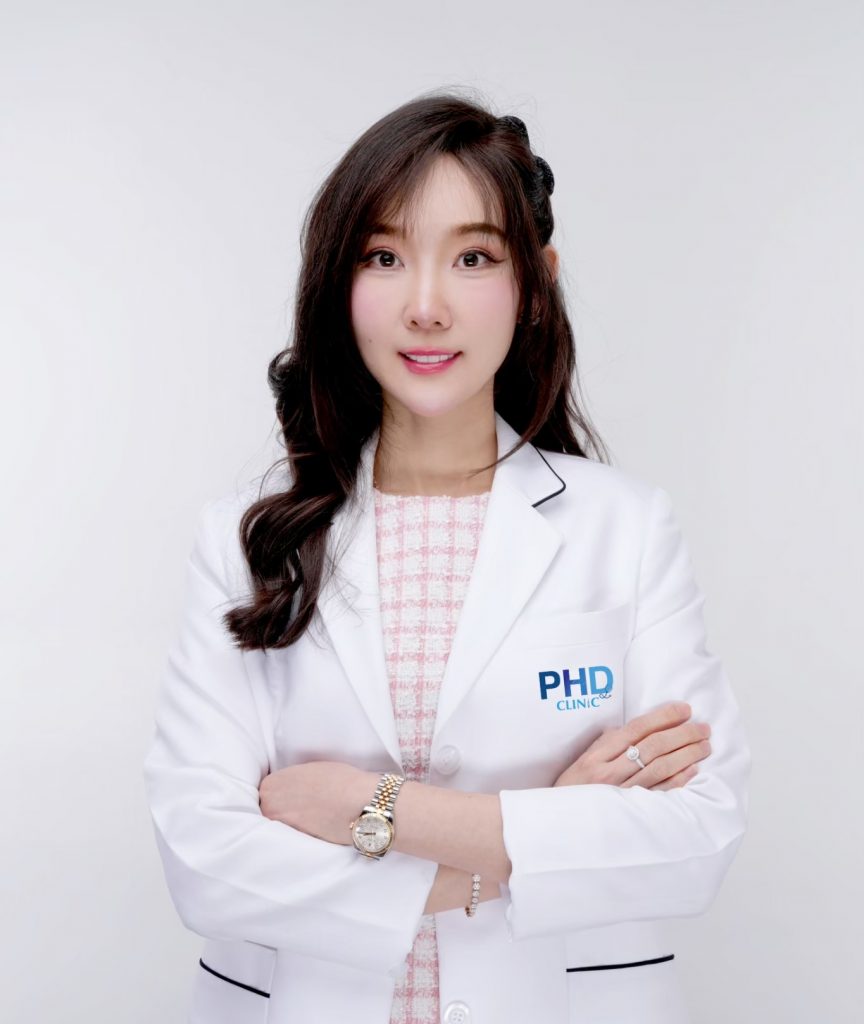
พญ.ทวีพร ตรีประภากร
Dr.Thaweeporn Treepraphakorn
แพทย์สาขาศัลยกรรมความงาม/เลเซอร์/ปลูกผม
แพทย์ อเมริกันบอร์ดปลูกผม (ABHRS)
- Fellowship in Cosmetic Surgery/ Korean college of Cosmetic Surgery
- Diplomate American Board of Hair Restoration Surgery/ABHRS
- International Board of Hair Restoration Surgery/ IBHRS
- Certificate Hair transplantation By Korean Society of Hair Restoration Surgery
- Member in association of Aesthetic Anti-aging Surgery,Thailand
- Member of International Society of Hair Restoration Surgery (ISHRS)
- Certificate Liposuction by Korean college of Cosmetic Surgery
- Master degree in Dermatology (MSc)
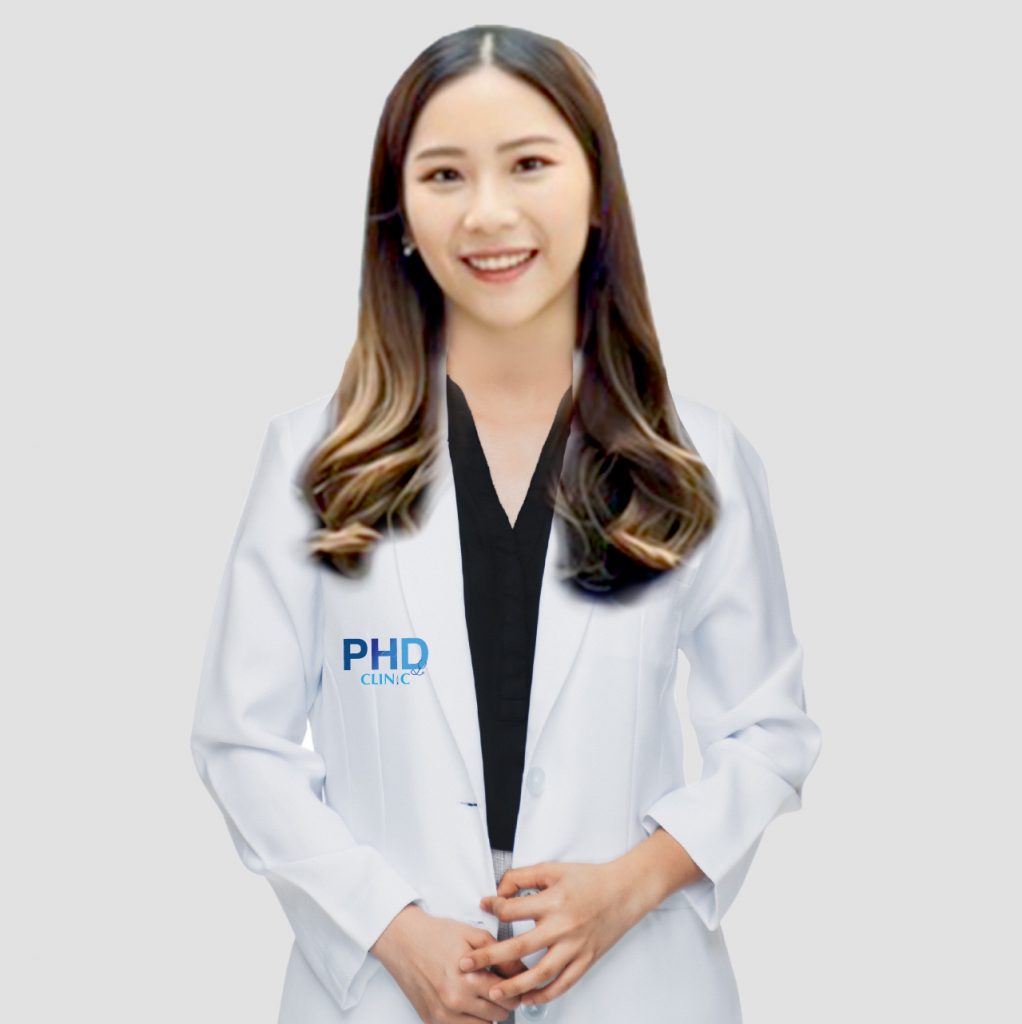
พญ.อรวรา วิศวะกุล
แพทย์ด้านความงาม/การปลูกผม Certificate in Hair Transplantation (ISHRS)
- M.D., Faculty of Medicine, Chiang Mai University (Full scholarship recipient)
- Passed Thailand National Licensing Exams (Steps 1–3) on first attempt
- 1+ year experience in aesthetic medicine with over 300 Botox and 100+ filler cases
- Skilled in advanced procedures: lasers (Pico, CO2), HIFU, PRP, mesotherapy
- Hair transplant experience: 30+ FUE+DHI cases, 100+ PRP for hair loss
- Attended ISHRS 2024 (Milan) and CAHRS/ASHRS 2024 (Hangzhou)

นพ.กิตติณัฐ จิตรติพรสรรค์
แพทย์ด้านความงาม/การปลูกผม Certificate in Hair Transplant (ISHRS)
- Dr. Kittinutt Chittipornsarn, Hair Transplant and Aesthetic Physician
- Specializes in advanced FUE hair transplantation with precision and safety
- Experienced in designing natural hairlines tailored to each individual
- Provides aesthetic treatments including Botox, fillers, thread lifting, and mesotherapy
- Currently working as a hair transplant surgeon at PhD Clinic Thailand
- Former part-time hair transplant surgeon at clinics in Pattaya
- Former part-time aesthetic physician at clinics in Bangkok
- Pursuing a Master’s Degree in Dermatology at Mae Fah Luang University
- Completed clinical dermatology training at Asahikawa Medical University, Japan
- Graduated with First-Class Honors (GPA 3.73) from the Faculty of Medicine, Chulalongkorn University
- Awarded Outstanding Medical Student for Ethics and Morality at Chonburi Hospital
- Conducting research on “Efficacy and Safety of 0.1% Topical Finasteride in Male Eyebrow Enhancement”
- Attended multiple international conferences and trainings in hair transplantation
- Associate member of ISHRS (International Society of Hair Restoration Surgery)
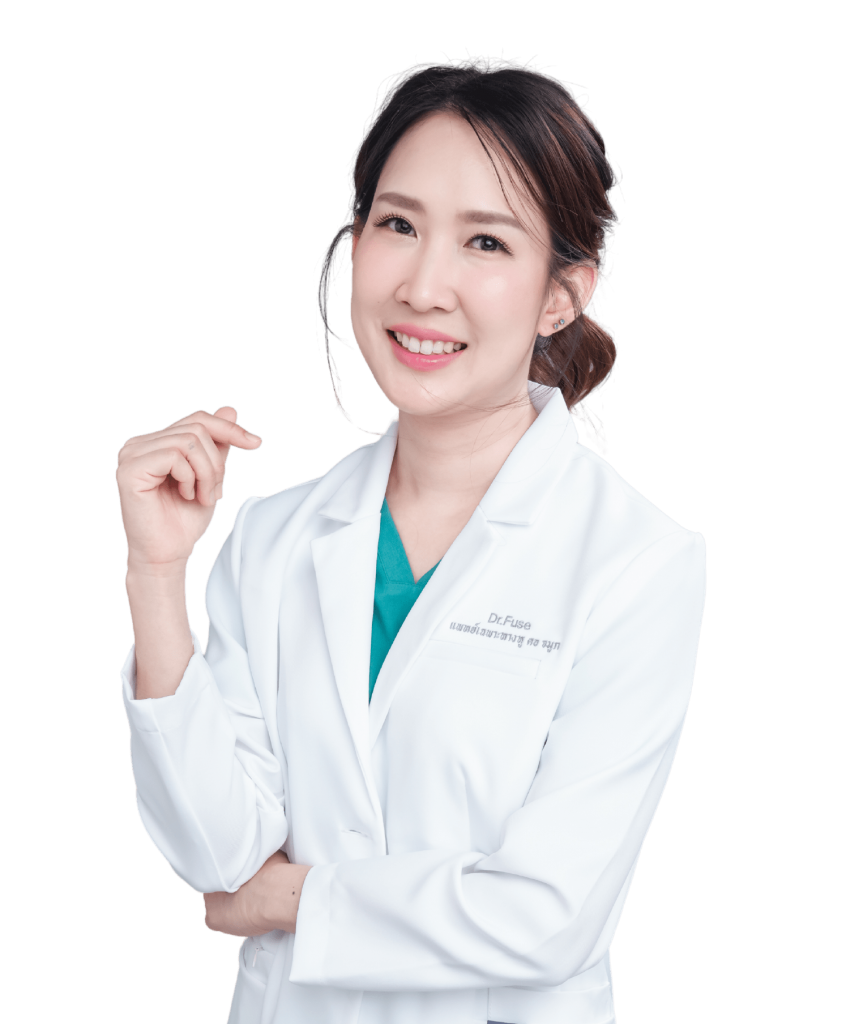
พญ.วรนารี เจริญรุ่งรัตน์
Dr.Worranaree Charoenrungrat
แพทย์เฉพาะทางหู คอ จมูก (ENT)
-
- Diploma Certifying Proficiency in the specialty of Otorhinolaryngology.
- Certificated on “Rhinomama2025 Rhinoplasty
Master Class, Manila, Philippines. - Certificated on “Facelift with Masters”
at Korea V Plastic Surgery, South Korea - Certificated on “Advanced Korean Rhinoplasty
and Lower Face Correction” at Korea V PlasticSurgery,South Korea - Certificated on “18th Ramathibodi Annual Symposium
of Plastic Surgery, Rhinoplasty (RASP2024,2023) - Certificated on 1st Forehead Augmentation course, Keosan, Thailand
- Certificated on 1st Fixtine Forehead Training Course, Keosan, Thailand
